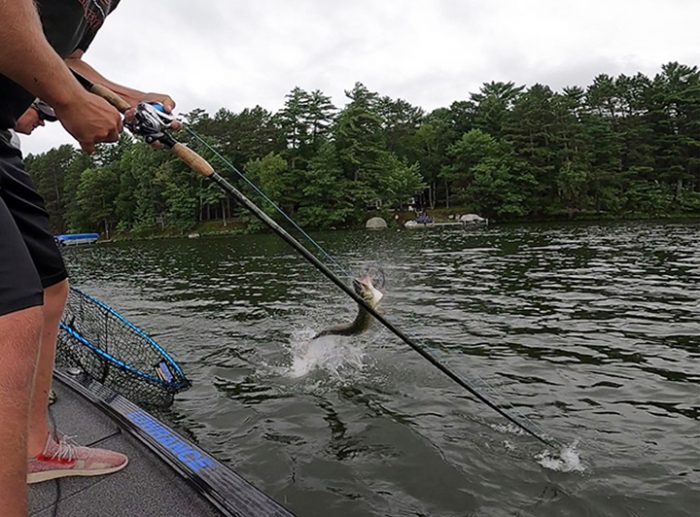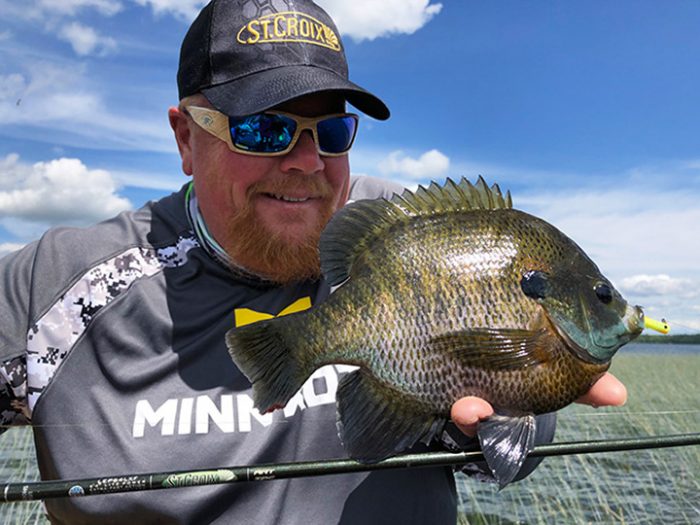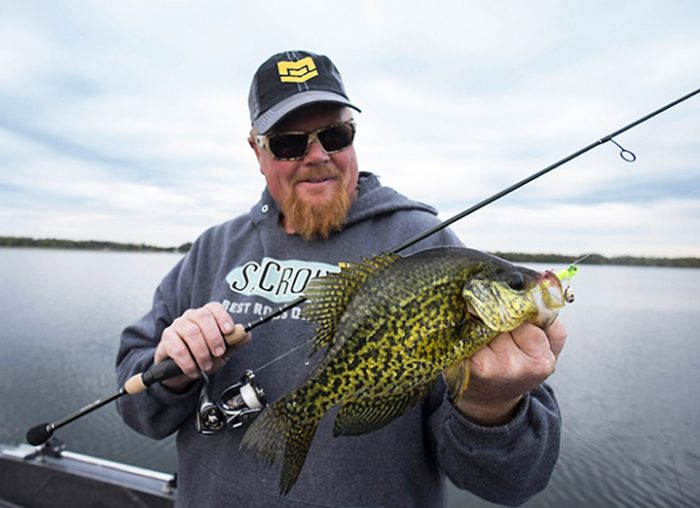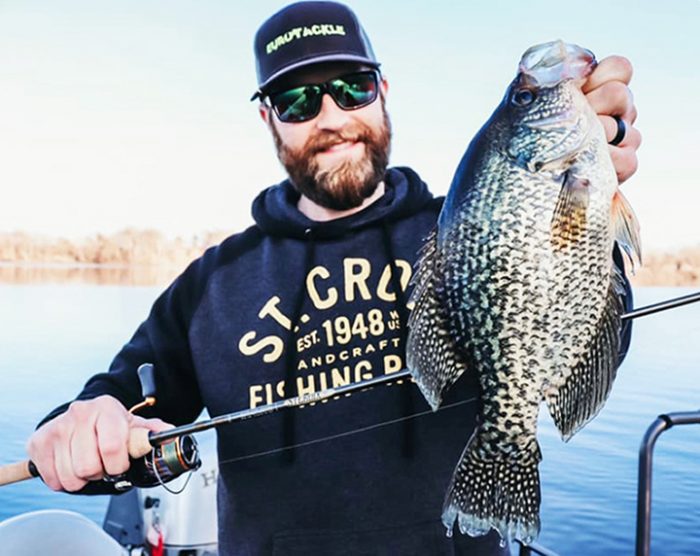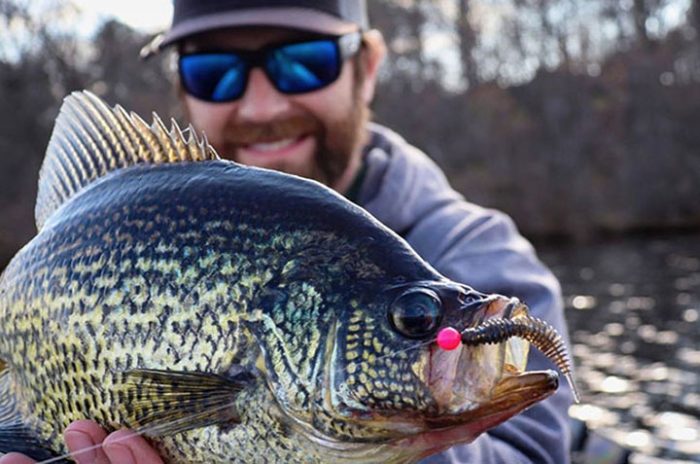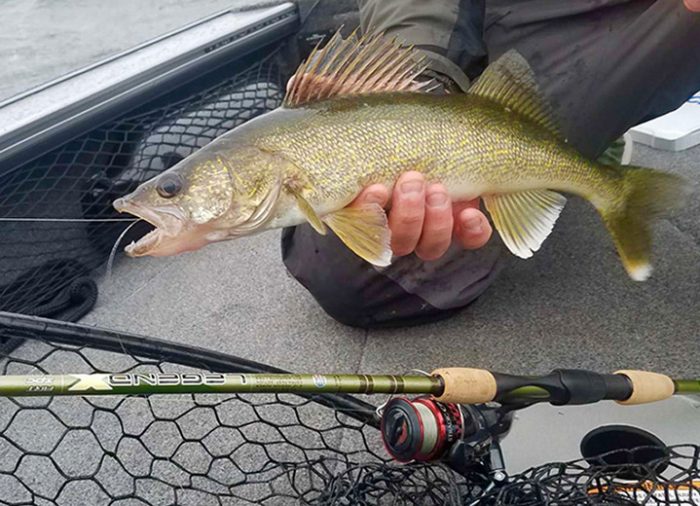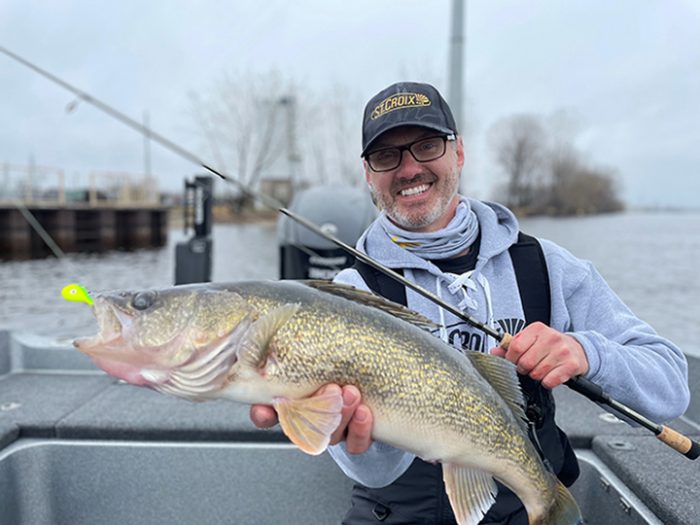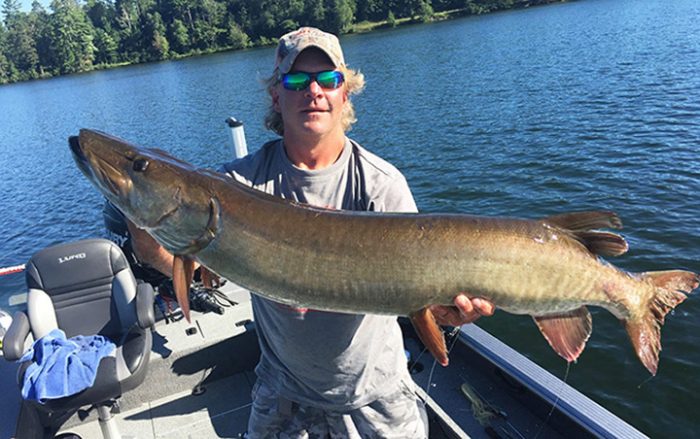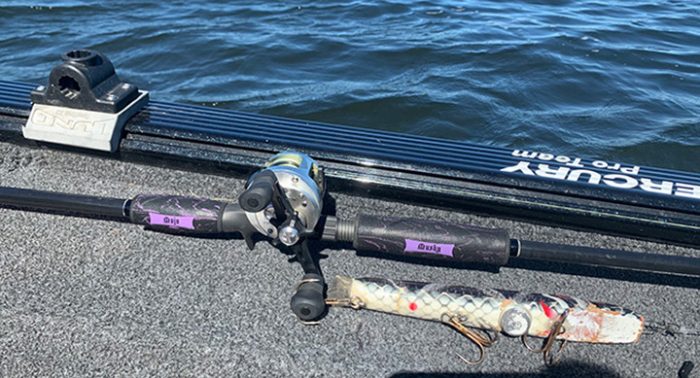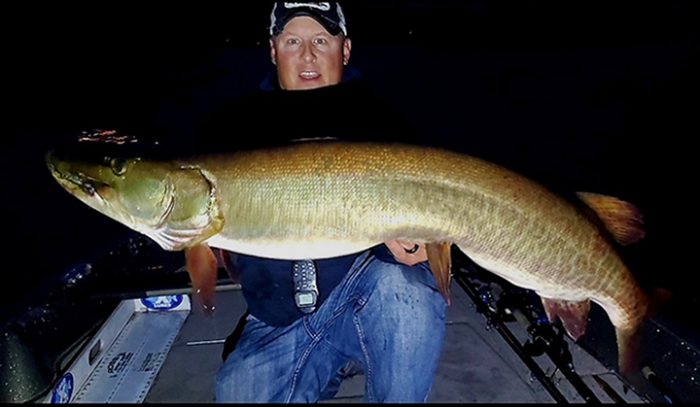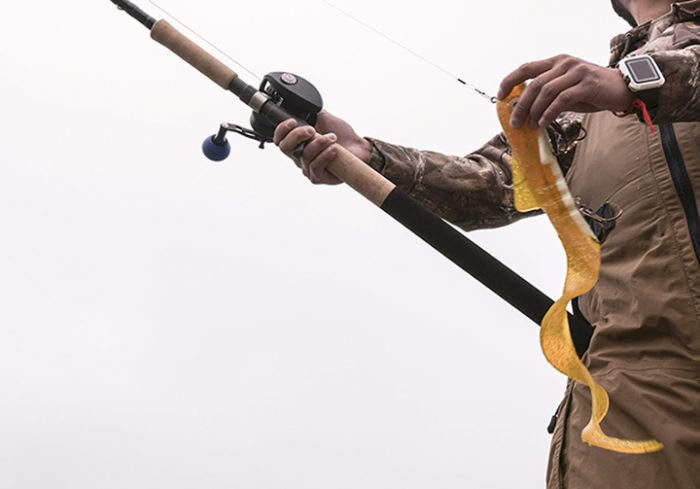My Favorite Rod Part 2: Panfish, Walleye and Musky
So far this month, we’ve discussed how length, power, and action combine to define the basic performance characteristics of a fishing rod. Last week, we specifically asked our bass experts to share personal thoughts and insights on their favorite rods.
This week we dive into the panfish, walleye, and musky categories. We asked our pros the same maddening question: If you could carry just one rod, what would it be? We’re hoping their answers will help the rest of us make more informed decisions when shopping for our next rod and ultimately lead to more success, fun, and satisfaction on the water for all.
Panfish
Go ahead and picture a panfish angler. Chances are your mind’s eye is portraying a viking-like vision of Brian “Bro” Brosdahl – the legendary fishing guide and fishing ambassador from the micro-metropolis of Max, Minnesota. Bro has made his passion for panfish a big part of his business for over 30 years now, and still gets giddy when asked to chime in on anything bluegill, crappie or perch-related.
Bro’s favorite all-around panfish rod is the St. Croix Legend Elite Panfish 7’, light-power, extra-fast action spinning (LEP70LXF) rod.
Why is Bro so bullish on this rod? “It’s simply the best multi-purpose panfish rod for long, bomb casting, searching, and slip bobbing,” he says. “It’s gentle on a slab crappie’s fragile mouth, can feel every nibble, quiver or shake, and has the backbone to pull giant, augering bluegills out of the jungle,” he adds, “with enough muster to defeat incidental catches of large bass or walleye.”
Bro frequently rigs the LEP70LXF with Sunline SX1 green 10-pound braided main line, a Northland Fishing Tackle Lite Bite ¾-inch bobber, and a size 10 swivel tied to 2-1/2 to 3 feet of Sunline Fluorocarbon 3 or 4-pound leader. At the business end, he most often ties on a 1/32 to 1/8-ounce Firefly jig or Gypsy Jig loaded with a wax worm, minnow, or chunk of night crawler – a versatile float rig that is adapted for any panfish species in almost any situation.
Bro says anglers who fish bobber rigs without a lighter leader are asking for unnecessary trouble. “It allows snags or snap-offs to take your whole rig. If you use a low-diameter braid for your main line, it’s going to be much stronger than your leader. This way, a snag is only going to claim your jig, and you can get back into the game much more quickly,” Bro advises.
In searching, casting, swimming, and jigging situations, Bro says his LEP70LXF is equally adept. “The 7’ length helps make this rod a versatile performer capable of almost any panfish presentation,” declares Bro, who says the extra-fast tip excels in casting light baits and telegraphs takes like no other. “That tip combined with the SCV/SCVI carbon blank makes this thing a true magic wand,” he adds, “compounding its lightweight sensitivity and yielding smooth and immediate access to the rod’s power. If you are looking for a single panfish rod that can do it all, you want to look at the 70LXF.”
Panfish specialist Blake Tollefson of Chippewa Falls, Wisconsin, whole-heartedly agrees with Bro’s assessments. “If I could only carry one panfish rod, it would be the Legend Elite Panfish LEP70LXF, but St. Croix makes the same great length, power, and action available in its extremely popular Panfish Series,” he says. “The Panfish Series gives more anglers the opportunity to own high-performance panfish rods, and the PFS70LXF model is the best-seller in the series for a reason.”
For panfish – and crappies in particular – Tollefson casts and retrieves a lot of small jig and plastic combinations. “This is probably 75% of my panfishing, as it is for a lot of other anglers, too,” he says. “Jigs in the 1/32-to-1/16-ounce range dominate most of my crappie fishing, but the PFS70LXF still has the ability to handle 1/8-ounce jigs when necessary. The rod also does well for other panfish-oriented techniques like casting small crankbaits, float fishing, and dropshotting,” he adds. “It’s an astounding panfish rod and can cover a wide range of techniques.”
Tollefson recalls the first time he ever used the rod. “I was fishing a river system for crappies with a 1/16-ounce jig and Eurotackle B-Vibe 2-inch paddletail. I cast upstream of a rock pile and before I could even start my retrieve, I felt that distinctive tap and set the hook. It was a windy day and I was fishing in current, so I can still remember how impressed I was with the ability to feel the bite before I even started my retrieve.”
Casting and retrieving small plastics is effective year ‘round, but Tollefson emphasizes its effectiveness during the late-spring and summer months when fish are living in and around weeds. “That’s when small paddletails like the Eurotackle B-Vibe really dominate,” he says. “These are great imitations of baitfish and can be fished at variable speeds and still provide a ton of action. I typically pair these up with 1/32-to-1/16-ounce jigs, but occasionally bump up to a 1/8-ounce jig in deeper water.
When presenting these baits in and around weeds, Tollefson says the goal is to get the bait as close as possible without getting hung up. “Depending on the day or body of water, I either want my lure to be ticking the tops of the weeds or just off the edge of the weed line. It often takes some experimenting to find out exactly where the fish are located within a given weed patch.”
Tollefson suggests a 1000-size reel like the Daiwa Fuego. “It pairs up perfectly with the PFS70LXF and LEP70LXF. Throughout the years, I have tried a wide range of lines on my crappie setups – everything from mono and fluoro to copolymers and braid,” he reports. “In the last few years, I have grown to favor micro braids in most situations. The micro braids allow for smooth, long casts as well as increased sensitivity. Oftentimes the higher visibility braids (white, greens, yellows) are great because you can see when fish grab the bait on the drop.” Tollefson runs a high-quality 4-pound fluorocarbon leader about four feet long so the fish can’t see the braid. “People often worry about the lack of stretch with braid and crappies because they have such soft mouths. When paired with the right rod, like the PFS70LXF, this is not an issue. The rod’s SCII carbon blank has the ideal backbone to soak up those head shakes and keep the fish pinned, and the lightweight stainless-steel guides on these rods stand up to braid really well.”
Tollefson cautions panfish anglers on choosing the right jig. “If you’re not using the right size jig, then there’s a good chance you won’t get bit. If your jig is too heavy, you’ll end up too far in the weeds and will constantly be peeling weeds off the end of your line. If it’s too light, then you won’t get close enough. A 1/16-to1/8-ounce jig usually puts you in the ballpark. From there, you can manage your depth and separation from the weeds with retrieve speed,” Tollefson advises. “I’ve found that slow is usually the way to go. Reeling too fast gets you out of the strike zone before the fish can get to the bait, so if you find you have to reel too quickly to keep the jig off the weeds, go lighter.”
Walleye
A professional angler, educator, and fishing promoter from Barrington, Illinois, John Balla employs a variety of techniques to catch walleye, and a whole lot of them involve jigs. “The St. Croix Legend X 6’8” medium power, extra-fast action (XLS68MXF) is my favorite rod for most jigging techniques, but especially snap-jigging,” Balla says. “First thing is the feel of this rod; it’s so well balanced in the hand, unmatched by any other in my opinion. Balance is the key to fishing the lure the exact way it’s intended because in most forms of jigging the rod becomes a real part of the presentation.”
Balla says an extra-fast action is the way to go when fishing ¼-to-5/8-ounce jigs and plastics in the weeds. “St. Croix builds an extra-fast tip better than anyone, and that action is the most sensitive in terms of bite detection, period,” Balla says. “A St. Croix extra-fast tip tip gives feedback to the angler quicker than any other. This is critically important when fishing highly erratic and snapping motions which cause a slack line. Detecting and feeling slack-line bites is made easier with this rod; you simply miss fewer bites. The blank-through reel seat combined with the Torzite guide rings creates next-level sensitivity throughout the blank. That’s why the XLS68MXF is my weapon of choice when aggressively triggering walleyes in weeds.”
To fish weeds effectively, Balla chooses bullet, or fish-head-style jigs rigged with thin, paddletail plastics. “Simply choose the right weight of the jig depending on your depth,” he advises. “Try 3-4” plastics early in the year or match the forage of the lake you’re fishing.”
Balla pairs the XLF68MXF with at least a size 2500 reel. “I prefer a Daiwa Ballistic LT 2500 spooled with 12-16-pound Sunline SX1 braided line,” says Balla, who adds an 8-10-foot leader of 12- or 14-pound monofilament line connected to the braid with an FG knot. “The mono helps slow down the jig’s decent a bit and creates more lift on every snap of the rod.”
Choosing the right weeds for this presentation also makes a difference. “Look for weeds with broadleaf cabbage, which is a walleye magnet,” he says. “Long casts are preferable, and the 6’8” length of this rod helps greatly in that department. Position the rod at a 45-degree angle to your line, immediately reel up the slack, and quickly sweep the rod forward 4-6 feet. Pause and use this first sweep to see how long it takes to reach the weeds and make a mental note. Reel up the slack and sweep again, letting the jig fall to just catch the tip of the weeds. Repeat this all the way back to the boat.” Balla encourages anglers employing this technique to be aggressive. “You’ll be amazed at how the walleye respond to a darting bait above their heads. Be prepared to catch anything that swims in those weeds, not just walleyes, but bass, pike, perch, and rock bass as well.”
Balla says medium power is perfect for this presentation. “Medium-light power and slower rods aren’t suited for the tension and water resistance that’s created with the snap or the sweep of the jig and plastic,” he says. “Also, you need some power when a hooked fish dives down into the weeds.” He says sensitivity is very important because the angler needs to use the rod to feel the jig contacting the weeds. “It’s so important to fish through the scattered tops of the weeds,” he emphasizes. “Choosing too heavy of a jig or oversized plastics reduces the effectiveness of the technique as well.”
Finally, Balla says choosing the right rod for a specific technique is critical to fishing success. “When it comes to snap-jigging hungry and aggressive walleye in weedy cover, I feel the best rod for the job is a 6’8” medium power, extra-fast action model, and for my money, that model in St. Croix’s Legend X Series is the top performer. But St. Croix builds technique-specific walleye rods in many different series, and I use them all. Most walleye anglers are going to find everything they could want or need in a walleye rod in St. Croix’s popular Eyecon Series. These are high-performance technique-specific rods that give walleye anglers the upper hand in any situation at a really attractive price, so they can afford to buy several rods and be ready for any presentation the day demands.”
Musky
Musky angling has evolved dramatically since its early days when a ¾-ounce bucktail spinner was about the only thing a musky angler ever needed. Today’s musky lures have expanded into a seemingly endless list of categories, with sizes ranging from large to jumbo covering weight ranges between ½-ounce to a full pound in a few extreme cases. Musky rods have become increasingly specialized to keep up with the trends, and St. Croix has remained on the leading edge of their development.
Wisconsin fishing guide, Rob Manthei, says St. Croix’s Mojo Musky Series rods deliver all the performance and versatility musky anglers need at a competitive price.
“St. Croix makes more expensive musky rods, but I really like this series,” he says. “And I know a lot of other musky anglers who do, too. They’re physically comfortable, strong as nails, and stand up not only to big fish, but also the unique rigors of guide duty.” Within the expansive offerings of the popular Mojo Musky Series, Manthei says the 8’6” heavy power, fast action MJM86HF is his favorite all-arounder.
“Like the other models, it’s got a really comfortable Winn grip, and I can work a variety of lures with just this one rod,” Manthei says. “Rippin’ rubber, twitching large cranks, and burning bucktails… anything between 3 and 8 ounces, which covers a lot of musky lures, this rod will do it all.”
Manthei matches his MJM86HF Mojo Musky rod with a 400-size reel and 80-pound Seaguar Threadlock line. His leaders are a mix of fluoro for most lures and single-strand wire when he’s throwing rubber. He urges anglers to resist the temptation to use reels that are too big or too fast. “If musky anglers would stop listening to the internet and start listening to their guides, they’d catch a lot more fish and stay a lot more comfortable while they are doing it,” he says.
John Kleczewski of Park Falls, Wisconsin is the owner of Lake X Lures and Lake X Lures Guide Service. Known as one of the most knowledgeable musky topwater experts in the industry, Kleczewski will do whatever it takes to coax a bite or convert a follow. He shares Manthei’s affinity for the versatility of an 8’6” heavy power, fast action rod.
“I love my 8’6” heavy power, fast action Legend Tournament Musky rod (LMC86HF),” he says. “St. Croix calls it the ‘Sling Blade,’ and it’s super versatile for normal size topwater baits, blade baits, and dive-and-rise jerk baits. The other thing I have noticed is how well fish stay pinned with this rod during battle… the backbone, the way the rod loads up… it’s perfect and has been a great stick for myself and clients.”
But Kleczewski often needs an even heavier rod for the rubber baits he throws and the larger topwater baits he makes and is known for. “The Premier ‘Rubber Rod’ – which is a 9’ extra-heavy power, fast action model – is my go-to for not only bigger rubber, but our larger Cannonball and Cannonball Jr. topwaters, too,” he says. “This rod makes casting these big, heavy baits a lot easier, and they’re designed to hold up against the stresses involved in casting lures up to 16 ounces. And man, do they have the backbone to drive hooks home into a big fish.”
Kleczewski says that balance and ergonomics, while often overlooked by anglers, are critical factors that should be evaluated when picking out a musky rod, especially longer, heavier models. “You have to keep your lure in the water to earn success in musky fishing, and that means casting for long periods. St. Croix nails the factors of ergonomics and balance as they relate to angler comfort. Take the hybrid handle design on the Rubber Rod. What would you rather have pushing into your side all day long, hard cork, or softer EVA? St. Croix knows the answer because their designs are driven by the needs of anglers.”
St. Croix’s mission is to serve anglers with an expansive selection of rods across a wide span of prices that give them the upper hand and elevate their experience in any fishing situation. Browse our distinct rod series to find the individual panfish, walleye, and musky models that best suit your specific needs. Visit your nearest St. Croix Dealer or our Guide Center for additional help and information.
Next week, we’ll take a detailed look at a few St. Croix rods favored by our saltwater pros and learn how they use them to experience more success on the water.

